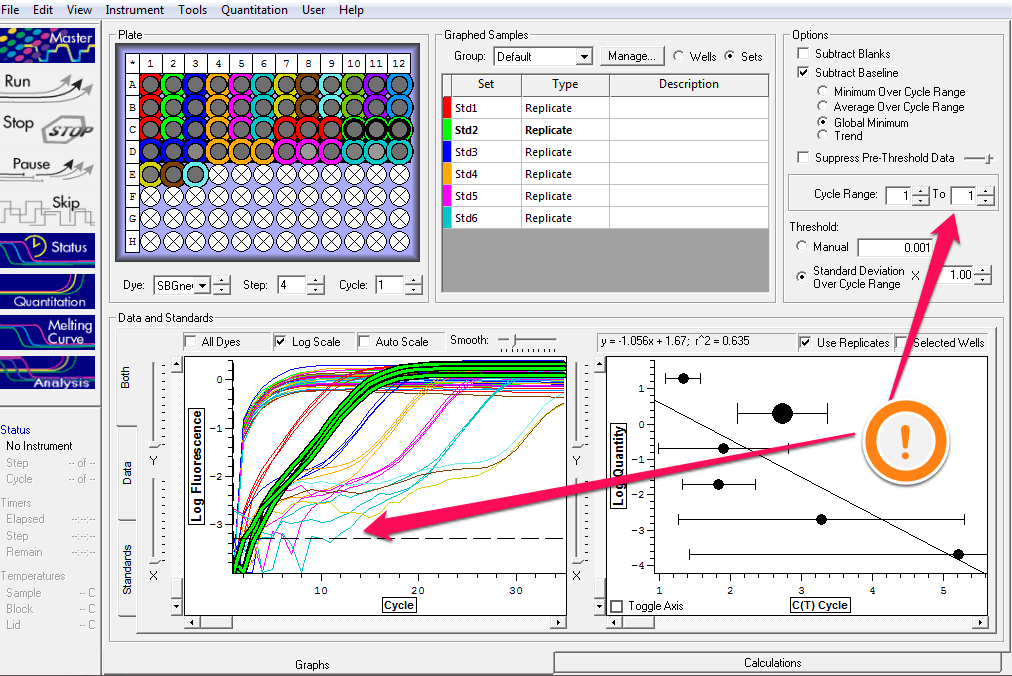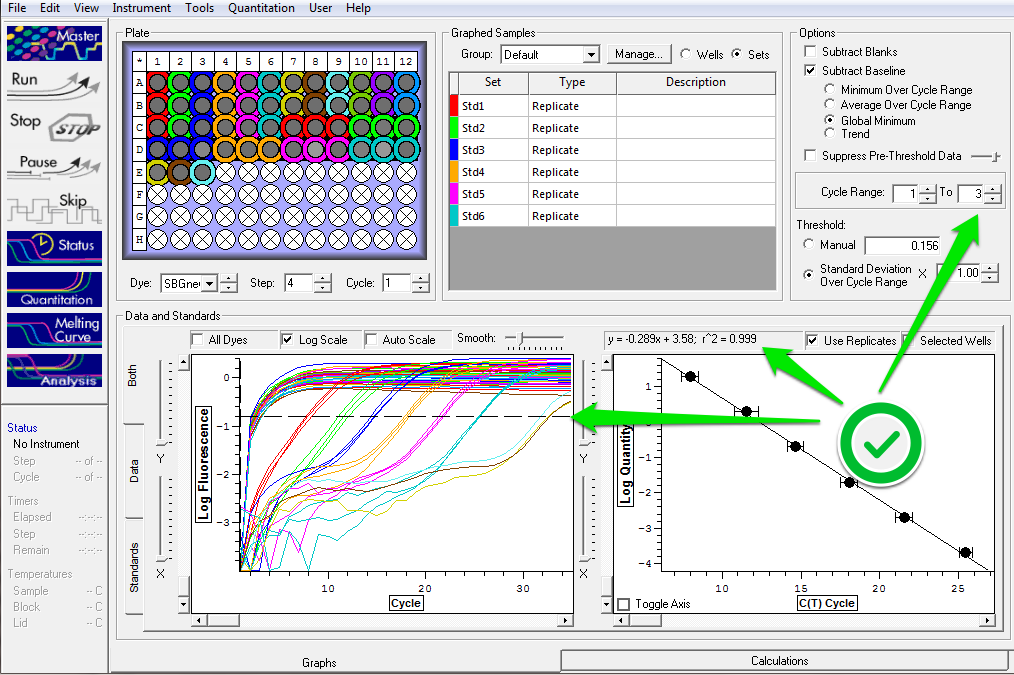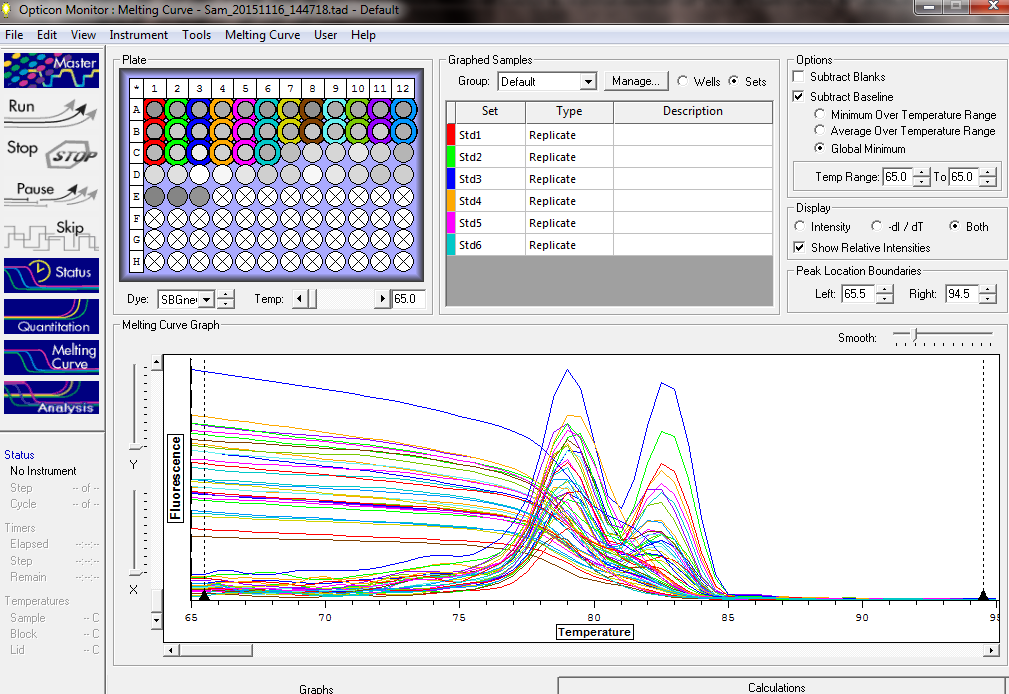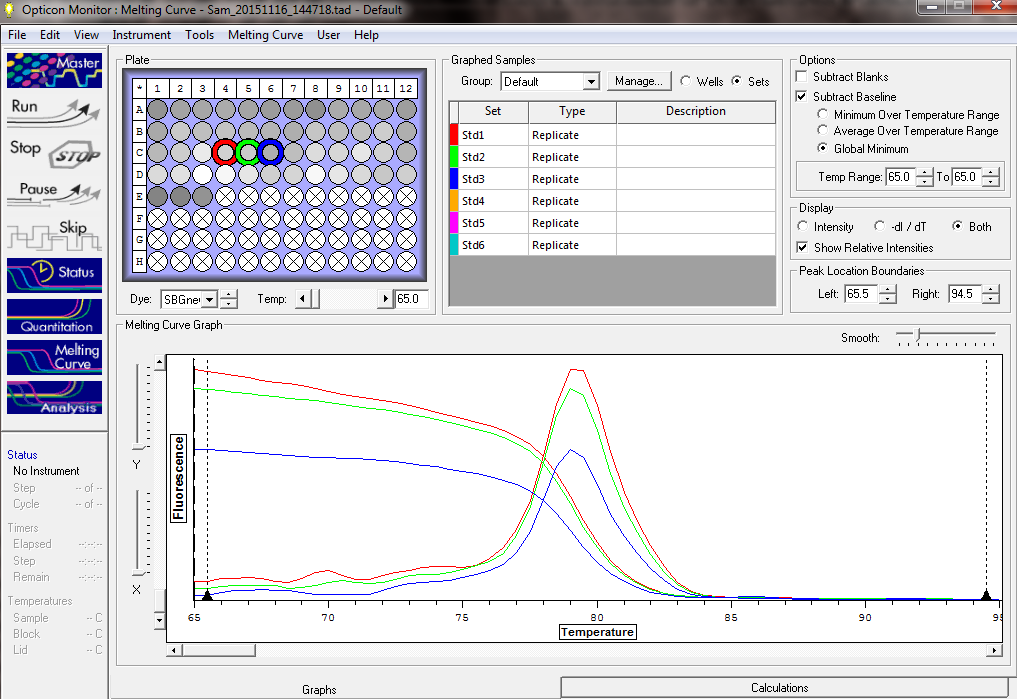The final step before sequencing these 2bRAD libraries is to quantify them. Used the KAPA Illumina Quantification Kit (KAPA Biosystems) according to the manufacturer’s protocol.
Made 1:4 dilutions of each library to use as template.
Ran all samples, including standards, in triplicate on the Roberts Lab Opticon2 (BioRad).
Plate set up and master mix can be found here: 20151116_qPCR_plate_layout_Oly_RAD.JPG
Results:
qPCR Data File (TAD): Sam_20151116_144718.tad
The take home messages from this qPCR are this:
The amplification plots that are pushed up against the left side of the graph (essentially at ~ cycle 1) are all of the libraries. A 1:4 dilution was insufficient to have the libraries amplify within the range of the standard curve.
All libraries except one (Oly RAD Library 30) have detectable levels of primer dimer. This confounds library quantification (because both the intended PCR product and the primer dimers contribute to the fluorescence accumulation), as well as potentially interfering with the subsequent Illumina sequencing (primer dimers will be sequenced and contain no insert sequence).
Will repeat the qPCR with more appropriately diluted libraries.
See the info below for more deets on this run.
Default analysis settings need to be adjusted to account for how early the standard curve comes up. Otherwise, the Opticon software sets the baseline incorrectly:
 (http://eagle.fish.washington.edu/Arabidopsis/201501116_RAD_qPCR_01.png)
(http://eagle.fish.washington.edu/Arabidopsis/201501116_RAD_qPCR_01.png)
The KAPA Quantification Kit indicates that the baseline calculations need to be extended to cycles 1 through 3. This allows the software to set the baseline threshold correctly:
 (http://eagle.fish.washington.edu/Arabidopsis/201501116_RAD_qPCR_02.png)
(http://eagle.fish.washington.edu/Arabidopsis/201501116_RAD_qPCR_02.png)
Melt curve analysis of the standard curve shows the expected profile - slight hump leading into the peak:
 (http://eagle.fish.washington.edu/Arabidopsis/201501116_RAD_qPCR_std_melt.png)
(http://eagle.fish.washington.edu/Arabidopsis/201501116_RAD_qPCR_std_melt.png)
Melt curve analysis of the libraries. Dual peaks indicate primer dimer contamination:
 (http://eagle.fish.washington.edu/Arabidopsis/201501116_RAD_qPCR_library_melt_01.png)
(http://eagle.fish.washington.edu/Arabidopsis/201501116_RAD_qPCR_library_melt_01.png)
Melt curve analysis of Oly RAD Library 30. Shows the desired single peak, suggesting library is free of primer dimers:
 (http://eagle.fish.washington.edu/Arabidopsis/201501116_RAD_qPCR_library_melt_02.png)
(http://eagle.fish.washington.edu/Arabidopsis/201501116_RAD_qPCR_library_melt_02.png)